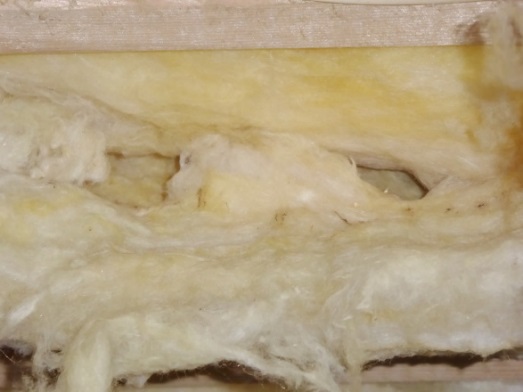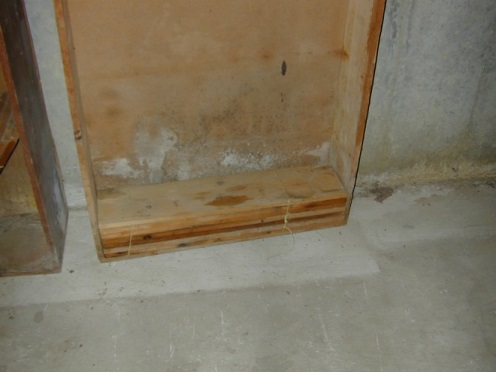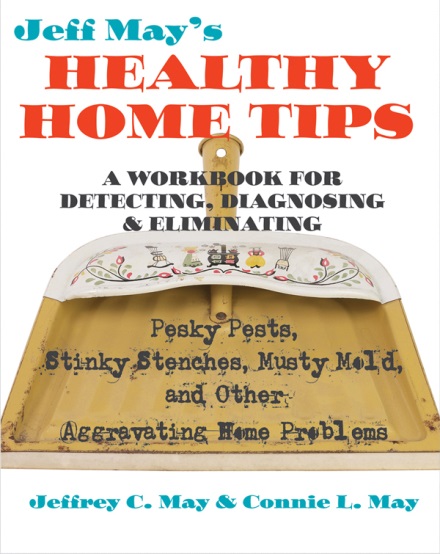IAQ IQ, Winter 2017-2018
©2018 Jeffrey C. May
In this newsletter, I’m discussing some IAQ issues that could affect your health as a home/building inspector.
This article is based on one that I wrote in 2010. Many of you were not receiving my newsletters at that time, so this may be a new article for you. For those who remember the article, I’ve expanded the discussion and added photographs in this update.
Contaminants found indoors include mold spores, volatile organic compounds (VOCs), and gases, to name a few. Some of these contaminants (like pollen grains and outdoor-type spores) come from the exterior, but many come from indoor sources.
Perhaps when you’ve entered some buildings you are inspecting, you have sneezed, wheezed or coughed. Even if you don’t have allergies, you can develop environmental sensitivities through repeated exposures to mold spores, bacteria, pesticides, and the like. So I encourage you to take some steps to minimize your exposures.
Potential allergens also include “surrogate allergens.” If small, respirable particles, such as soot and rust, come into contact with particles containing allergens, such as mold spores, and then become re-aerosolized, you can be exposed to mold allergens if you inhale these “surrogate allergens.” The best example of a recognized surrogate allergen is a corn-starch granule that has come in contact with latex protein in a rubber glove.
Supplies you should always carry in your vehicle include:
- A box of NIOSH N95 two-strap masks. If breathing through a mask fogs your glasses, you can buy the kind of mask that has an exhaust valve.
- A half-face respirator with N95 or P100 filters.
- Overalls or a Tyvek suit for very soiled spaces.
Don’t feel awkward about wearing a mask, respirator or overalls/Tyvek suit when needed. You can explain to your client that you go into potentially contaminated spaces on a nearly daily basis, and thus need to protect yourself from exposures to possible allergens and other irritants.
When to use such supplies:
Mechanical equipment
If you remove the blower-cabinet access and/or filter on a furnace or air handler (steps I always recommend), wear a mask. It’s common for such equipment to contain allergenic dust, either collected purposely on the filter or, if filtration is inadequate or the filter holder is allowing air by-pass, collected inadvertently on fibrous lining material in the blower cabinet.
Fiberglass insulation
There is a 100% probability that exposed fiberglass insulation in a ventilated crawl space – no matter how pristine the fiberglass may look – will contain mold growth flourishing on dust captured in the fiberglass fibers.

Such fiberglass can also contain rodent litter, which is allergenic. In addition, the floor dust is likely to contain all sorts of microorganisms and allergens.
If you enter a crawl space, wear a mask as well as overalls or a Tyvek suit. Only disturb the fiberglass if you must.
About 50% of exposed fiberglass insulation in unfinished basements is contaminated with mold growth, because the basements were not adequately dehumidified during one or more periods of time in the history of the buildings (even dead mold can be allergenic). If you see rodent “tunnels” in the insulation, the material also contains rodent liter. If you move such insulation, wear a mask. I know of one home inspector who wasn’t wearing a mask when he moved contaminated fiberglass, and he experienced severe asthma symptoms.

Fiberglass insulation in an eaves storage space or attic in a 100 year-old building can contain century-old, allergenic dust from prior pets, or from pest infestations or mold growth in the attic or elsewhere in the home.
In one older home, the buyer was following me on the inspection. As we stepped gingerly over the floor joists in the attic, I realized that the crunchy “insulation” I was stepping on consisted of pigeon droppings and feathers. The buyer, who was Spanish speaking, shouted “caca de paloma” (pigeon “poop”) and ran out of the house; I had to chase him down the sidewalk to get paid.
The attic or eaves in a newer building can also be problematic. I once opened up attic eaves in a fairly newly constructed building that had been vacant for a while and found piles of raccoon droppings. If you walk through an insulated attic or move fiberglass in an attic or attic eaves, wear a mask.
Mold in an unfinished basement
Due to elevated relative humidity (RH), mold can grow on many surfaces, including on joists, subfloor, built-ins, stored goods, and the floor dust that you disturb while walking around. Sometimes this mold is visible to the naked eye, but usually not. If the basement smells musty, wear a mask. If a client has allergies, offer him or her a mask.
![C:\Users\Owner\Desktop\Visuals for winter IAQ IQ\6669 Aspergillus mold on beam [sampled].JPG](http://www.mayindoorair.com/wp-content/uploads/2020/05/c-users-owner-desktop-visuals-for-winter-iaq-iq-6.jpeg)

What about finished basements?
Finished basements can also be musty if the RH has not been adequately controlled through dehumidification or air conditioning in the cooling season, and heat in the heating season.
If a finished basement room is carpeted, there could easily be mold growth captured in the carpet fibers. If a finished basement smells musty or you see spots that could be mold growth, wear a mask.
As air cools, its RH rises. If the RH rises over 80%, some species of mold can grow, including Aspergillus and Penicillium, which are highly friable and are allergenic. Below-grade spaces are naturally cool and damp, and thus prone to developing mold-growth problems. And if you see signs of water intrusion in a basement, there is a high likelihood that mold growth is present.
Newly constructed and newly renovated properties
Properties that are newly constructed or that have been recently renovated are not immune to mold-growth problems. If workers sawed wood in the basement, biodegradable dust has likely collected in exposed fiberglass insulation. If the RH was not adequately controlled, mold growth was sure to follow.
If the heating or cooling system was run during construction, the ducts could be full of biodegradable sawdust. If the foundation or slab was poured during humid weather, there may be a nearly invisible layer of mildew growth on the basement concrete, joists and subfloor. If a basement smells musty, even in a new or newly renovated house, wear a mask when inspecting the space.
Many properties are renovated or repainted before being put on the market. In cool or cold weather, it is unlikely that such properties have aired out sufficiently for solvents in paints and other finishes to have off-gassed enough so that the odors have dissipated. If you are hypersensitive to the smell of paint, varnishes and other finishes, wear a charcoal respirator when inspecting newly constructed/renovated spaces.
Pesticides and gas leaks
If you smell pesticides or see pesticides in a property – such as in an attached garage – wear a charcoal respirator. It may also make sense to recommend that your client have a VOC test done at the property prior to Purchase and Sale.
A TIF 8800 combustible gas detector is a dandy and relatively inexpensive tool for detecting vapor trails that can lead you back to the source of gas and sewer odors, as well as some VOCs.
What to do in the middle or at the end of your work day
- Shake cloth overalls or the Tyvek suit after each use. Wear a mask while taking off and shaking the overalls or suit.
- Wash the cloth overalls before using them on another inspection day.
- If you have two inspections in one day, keep a change of clothing in your car. Find a place where you can change your clothes and wash up; put the dirty clothing into a bag for later cleaning.
- If you do mold sampling in habitable spaces, only do so while wearing clean clothing. Do not take samples in habitable areas after you’ve entered a basement or crawl space.
- Yes, it’s winter now, but if possible take off the clothes you wore during inspections outside of the habitable areas of your house: in an attached garage, for example, or in a boot room (with door to adjacent room closed). Keep a set of clean clothes in this space, and bag the clothes you wore during the day for later cleaning.
- Allergenic particles can also collect on hair, so wash your hair (and beard/mustache, if you have facial hair) as soon as you get home.
Make it your New Year’s resolution to protect your own health, as well as the health of your clients and members of your household, by taking some simple steps. You’ll be glad that you did.
A Happy New Year to All

We wrote this book for home occupants, but it may also be a useful guide to help you be aware of conditions in a building that could negatively impact your health.
Available on amazon.com
